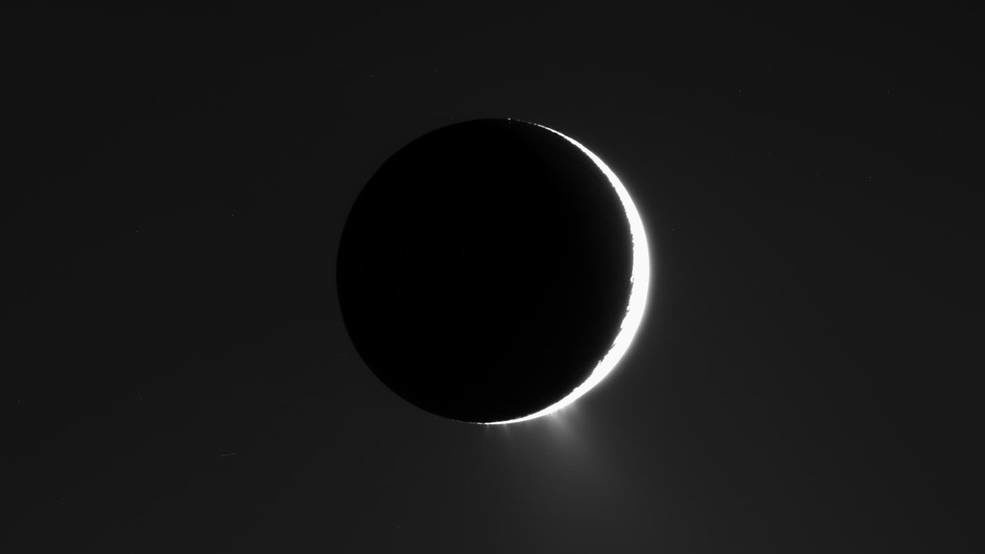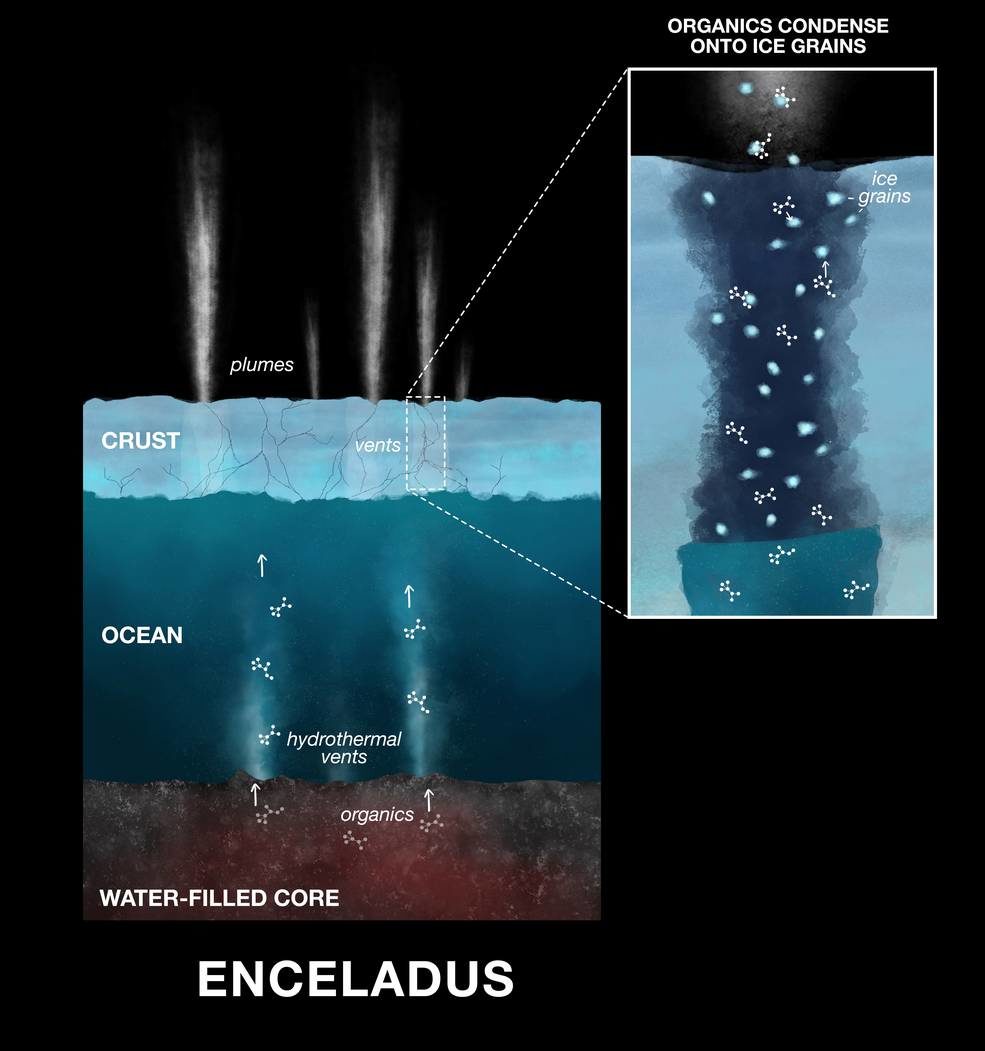
Powerful hydrothermal vents eject material from Enceladus' core, which mixes with water from the moon's massive subsurface ocean before it is released into space as water vapor and ice grains. The newly discovered molecules, condensed onto the ice grains, were determined to be nitrogen- and oxygen-bearing compounds.
On Earth, similar compounds are part of chemical reactions that produce amino acids, the building blocks of life. Hydrothermal vents on the ocean floor provide the energy that fuels the reactions. Scientists believe Enceladus' hydrothermal vents may operate in the same way, supplying energy that leads to the production of amino acids.

Although the Cassini mission ended in September 2017, the data it provided will be mined for decades. Khawaja's team used data from the spacecraft's Cosmic Dust Analyzer, or CDA, which detected ice grains emitted from Enceladus into Saturn's E ring.
The scientists used the CDA's mass spectrometer measurements to determine the composition of organic material in the grains.
The identified organics first dissolved in the ocean of Enceladus, then evaporated from the water surface before condensing and freezing onto ice grains inside the fractures in the moon's crust, scientists found. Blown into space with the rising plume emitted through those fractures, the ice grains were then analyzed by Cassini's CDA.
The new findings complement the team's discovery last year of large, insoluble complex organic molecules believed to float on the surface of Enceladus' ocean. The team went deeper with this recent work to find the ingredients, dissolved in the ocean, that are needed for the hydrothermal processes that would spur amino acid formation.
"Here we are finding smaller and soluble organic building blocks — potential precursors for amino acids and other ingredients required for life on Earth," said co-author Jon Hillier.
"This work shows that Enceladus' ocean has reactive building blocks in abundance, and it's another green light in the investigation of the habitability of Enceladus," added co-author Frank Postberg.
The Cassini-Huygens mission is a cooperative project of NASA, the European Space Agency (ESA) and the Italian Space Agency. NASA's Jet Propulsion Laboratory, a division of Caltech in Pasadena, California, manages the mission for NASA's Science Mission Directorate, Washington. JPL designed, developed and assembled the Cassini orbiter. The radar instrument was built by JPL and the Italian Space Agency, working with team members from the U.S. and several European countries.



Comment: See also:
- Did Earth 'Steal' Martian Water?
- C/2019 Q4: ANOTHER interstellar object to pass through our solar system
- Saturn's rings are raining at faster rate than previously thought
- Saturn acquired its rings relatively recently shows new data from NASA's Cassini
- Scientists discover a large ice corridor on Saturn's largest moon
- What mysterious stratospheric biology tells us about the possibility of life on other worlds
And check out SOTT radio's: